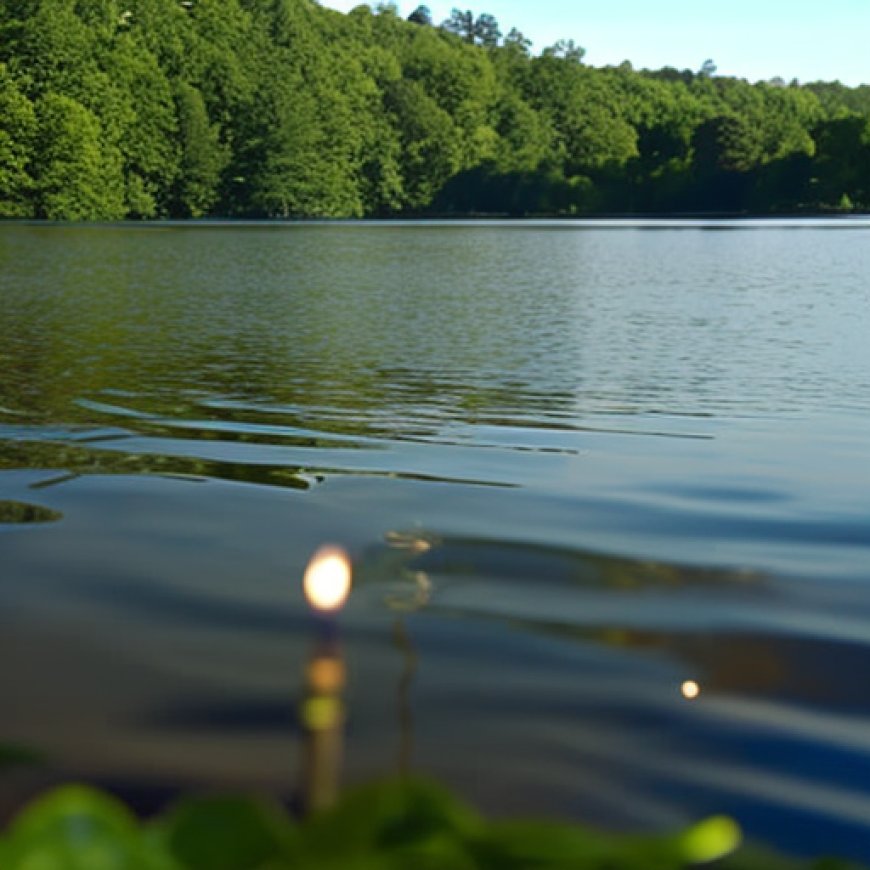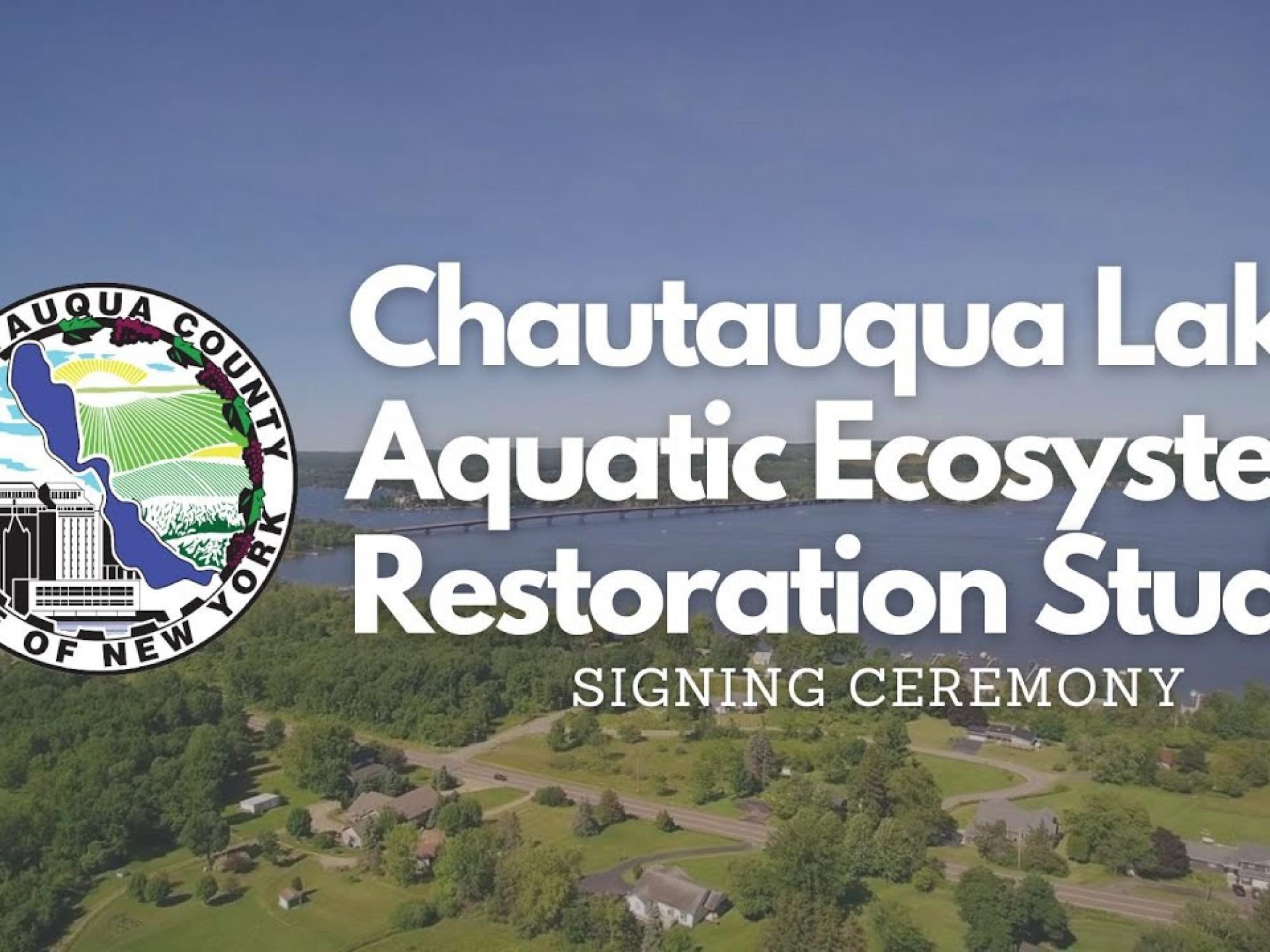Official Signing Ceremony to Celebrate Chautauqua Lake Aquatic Ecosystem Restoration Study


Chautauqua Lake Aquatic Ecosystem Restoration Feasibility Study

[embedded content]
Introduction
The Chautauqua County and the U.S. Army Corps of Engineers Pittsburgh District will hold an official signing ceremony on Monday to mark the beginning of the Chautauqua Lake Aquatic Ecosystem Restoration Feasibility Study. This collaborative effort aims to restore the aquatic ecosystem of Chautauqua Lake and address the sustainable development goals (SDGs).
Event Details
- Date: Monday, October 7, 2024
- Time: 11 a.m.
- Location: Mayville Depot Museum (16 Water Street in Mayville, NY)
Study Objectives
The Chautauqua Lake Aquatic Ecosystem Restoration Feasibility Study aims to address the aquatic impairments of the lake’s ecosystem. The lake and its associated wetlands support a diverse aquatic community and contribute to the local and regional socioeconomic system. However, habitat degradation poses threats to the sustainability of Chautauqua Lake, including sedimentation, growth of nuisance aquatic vegetation, and chemical degradation. Through a partnership with the U.S. Army Corps of Engineers Pittsburgh District, the study will explore potential measures to restore aquatic ecosystems and riparian habitats, improve recreational opportunities, and reduce flood and public-health risks. The study, initially authorized in 2018, recently received $500,000 in federal appropriations.
Key Speakers and Participants
- Col. Nicholas Melin, U.S. Army Corps of Engineers Pittsburgh District Commander
- Congressman Nick Langworthy
- Paul M. Wendel Jr., Chautauqua County Executive
- Pierre Chagnon, Chautauqua County Legislature Chairman
Research and Analysis
The Pittsburgh District will provide an overview of the study’s objectives and highlight the foundational research conducted by leading institutions such as the Jefferson Project, State University of New York at Fredonia, SUNY ESF, North Carolina State University, and Bowling Green University. The scoping activities will be conducted in the initial phase, followed by a detailed evaluation and analysis of management measures starting in January 2024.
Public Engagement and Findings
This multi-year, $3 million effort will involve the public and key stakeholders in seeking solutions to the lake’s most pressing environmental challenges, including invasive aquatic plants and harmful algal blooms. The feasibility study’s findings will be shared with the public, providing an opportunity for review and comment.
Statements from Key Participants
Congressman Nick Langworthy stated, “I’m proud to have worked to secure this critical funding for the Chautauqua Lake Aquatic Ecosystem Restoration Study and to see it come to fruition. This investment will address water quality issues and restore the lake’s natural beauty. With the support of our local partners, we’re ensuring that the lake remains a cherished resource for residents, visitors, and future generations to enjoy. I am dedicated to spending my time in Congress continually working towards the revitalization of Chautauqua Lake.”
Chautauqua County Executive Paul M. Wendel Jr. expressed gratitude, saying, “This is the first federal investment in Chautauqua Lake, and we are so thankful to Congressman Nick Langworthy for making this happen. This ceremony marks an important step forward in safeguarding the future of Chautauqua Lake. We are grateful for the collaboration with the U.S. Army Corps of Engineers, as well as the continued support from our local and federal partners.”
SDGs, Targets, and Indicators
-
SDG 6: Clean Water and Sanitation
- Target 6.3: By 2030, improve water quality by reducing pollution, eliminating dumping and minimizing release of hazardous chemicals and materials, halving the proportion of untreated wastewater, and substantially increasing recycling and safe reuse globally.
- Indicator 6.3.2: Proportion of bodies of water with good ambient water quality.
-
SDG 14: Life Below Water
- Target 14.1: By 2025, prevent and significantly reduce marine pollution of all kinds, particularly from land-based activities, including marine debris and nutrient pollution.
- Indicator 14.1.1: Index of coastal eutrophication and floating plastic debris density.
-
SDG 15: Life on Land
- Target 15.1: By 2020, ensure the conservation, restoration, and sustainable use of terrestrial and inland freshwater ecosystems and their services, in particular forests, wetlands, mountains, and drylands, in line with obligations under international agreements.
- Indicator 15.1.1: Forest area as a proportion of total land area.
Table: SDGs, Targets, and Indicators
| SDGs | Targets | Indicators |
|---|---|---|
| SDG 6: Clean Water and Sanitation | Target 6.3: By 2030, improve water quality by reducing pollution, eliminating dumping and minimizing release of hazardous chemicals and materials, halving the proportion of untreated wastewater, and substantially increasing recycling and safe reuse globally. | Indicator 6.3.2: Proportion of bodies of water with good ambient water quality. |
| SDG 14: Life Below Water | Target 14.1: By 2025, prevent and significantly reduce marine pollution of all kinds, particularly from land-based activities, including marine debris and nutrient pollution. | Indicator 14.1.1: Index of coastal eutrophication and floating plastic debris density. |
| SDG 15: Life on Land | Target 15.1: By 2020, ensure the conservation, restoration, and sustainable use of terrestrial and inland freshwater ecosystems and their services, in particular forests, wetlands, mountains, and drylands, in line with obligations under international agreements. | Indicator 15.1.1: Forest area as a proportion of total land area. |
Analysis
1. Which SDGs are addressed or connected to the issues highlighted in the article?
The issues highlighted in the article are connected to the following SDGs:
- SDG 6: Clean Water and Sanitation
- SDG 14: Life Below Water
- SDG 15: Life on Land
2. What specific targets under those SDGs can be identified based on the article’s content?
Based on the article’s content, the specific targets under the identified SDGs are:
- Target 6.3: By 2030, improve water quality by reducing pollution, eliminating dumping and minimizing release of hazardous chemicals and materials, halving the proportion of untreated wastewater, and substantially increasing recycling and safe reuse globally.
- Target 14.1: By 2025, prevent and significantly reduce marine pollution of all kinds, particularly from land-based activities, including marine debris and nutrient pollution.
- Target 15.1: By 2020, ensure the conservation, restoration, and sustainable use of terrestrial and inland freshwater ecosystems and their services, in particular forests, wetlands, mountains, and drylands, in line with obligations under international agreements.
3. Are there any indicators mentioned or implied in the article that can be used to measure progress towards the identified targets?
Yes, there are indicators mentioned or implied in the article that can be used to measure progress towards the identified targets:
- Indicator 6.3.2: Proportion of bodies of water with good ambient water quality.
- Indicator 14.1.1: Index of coastal eutrophication and floating plastic debris density.
- Indicator 15.1.1: Forest area as a proportion of total land area.
Source: chqgov.com








